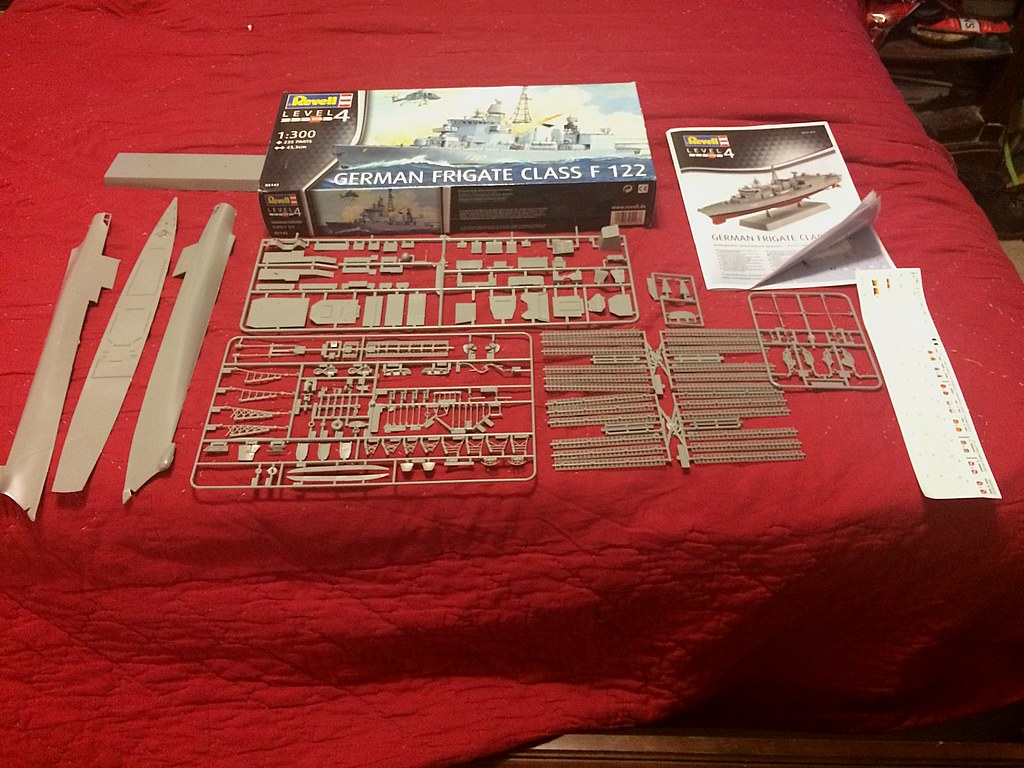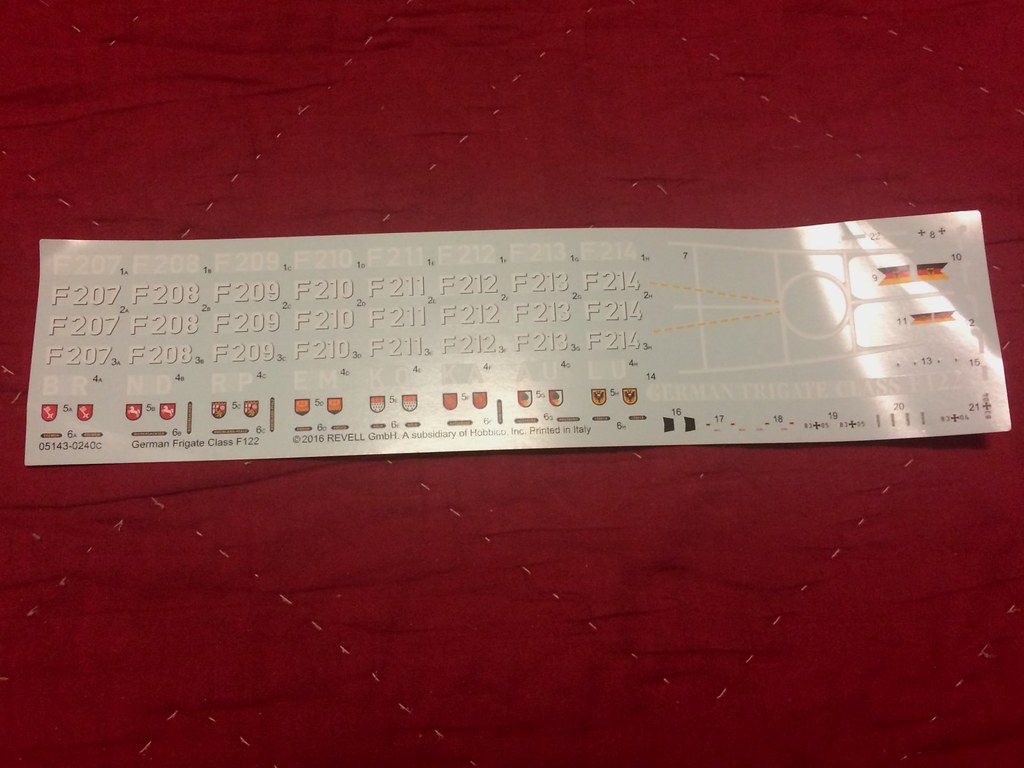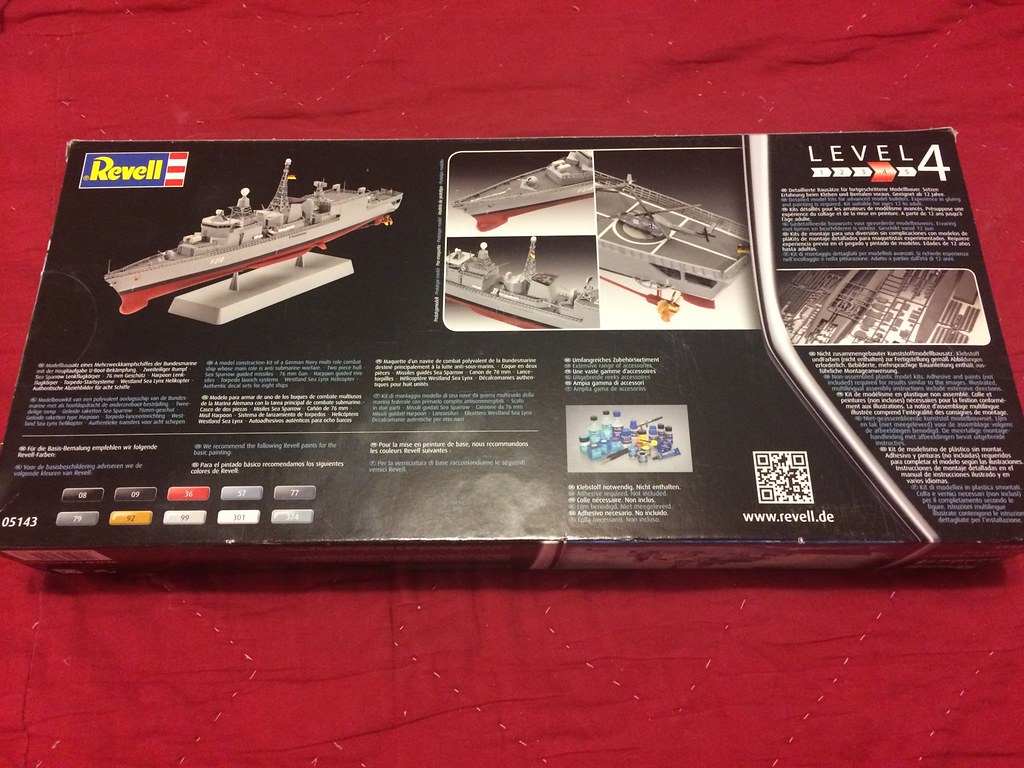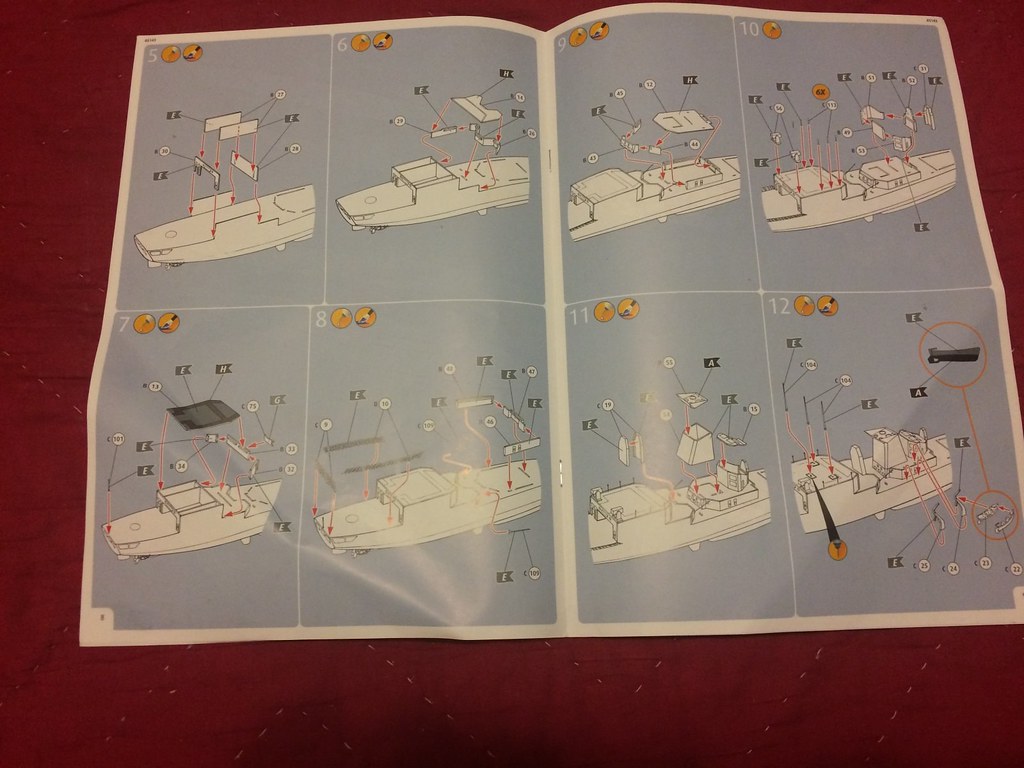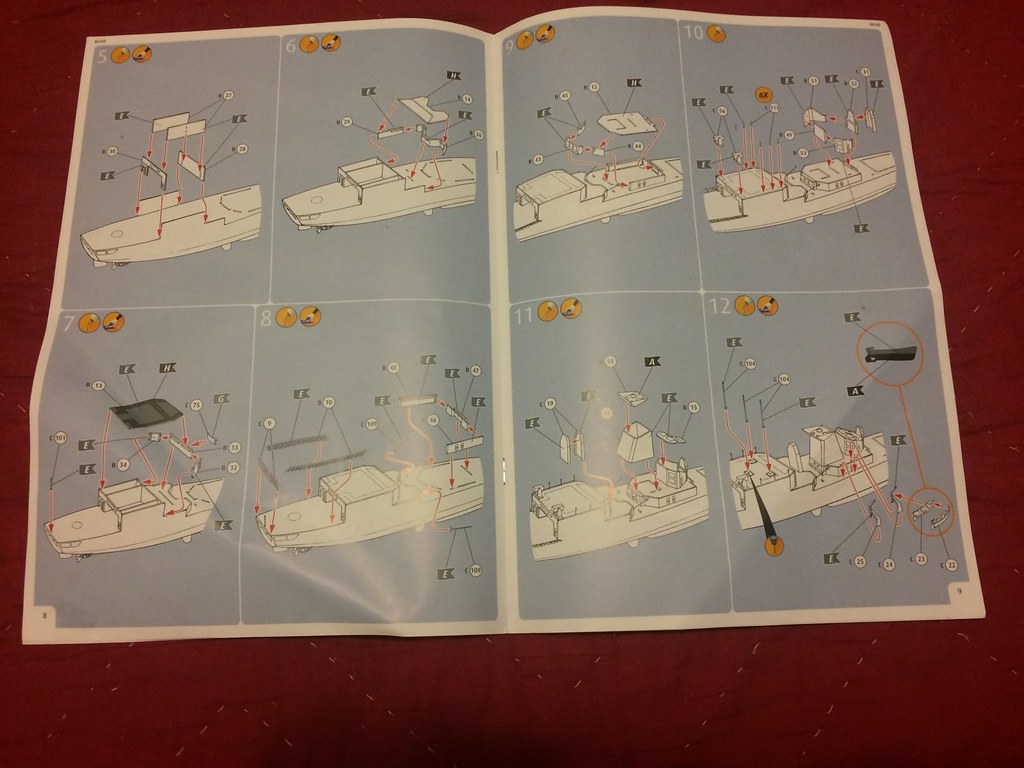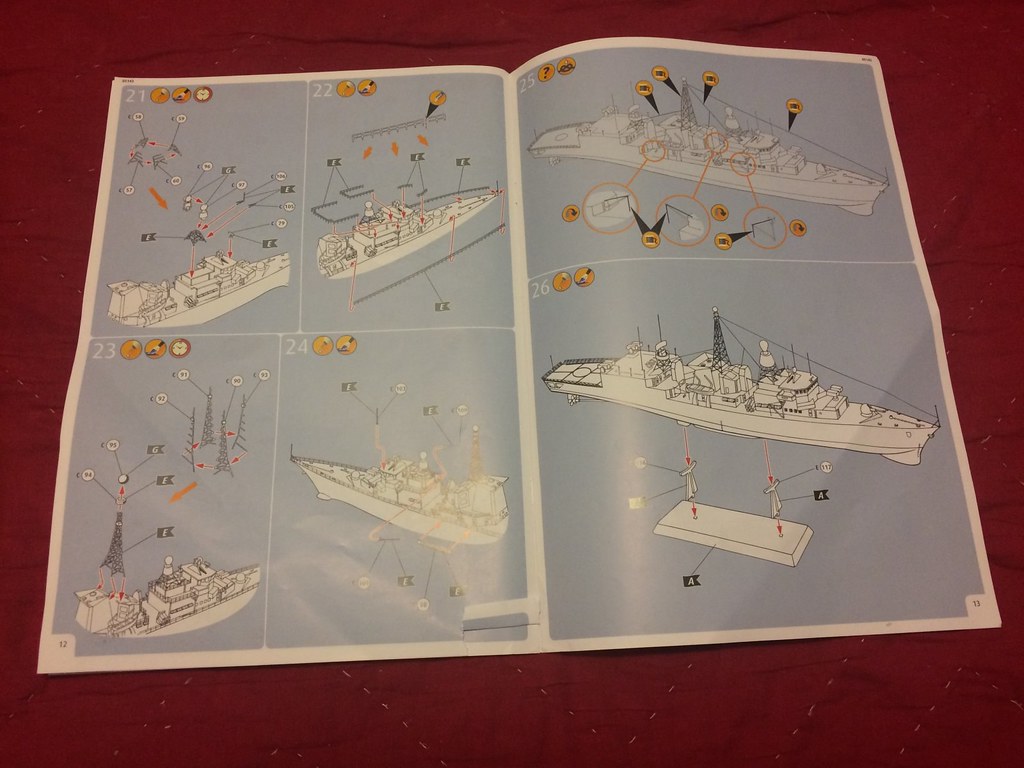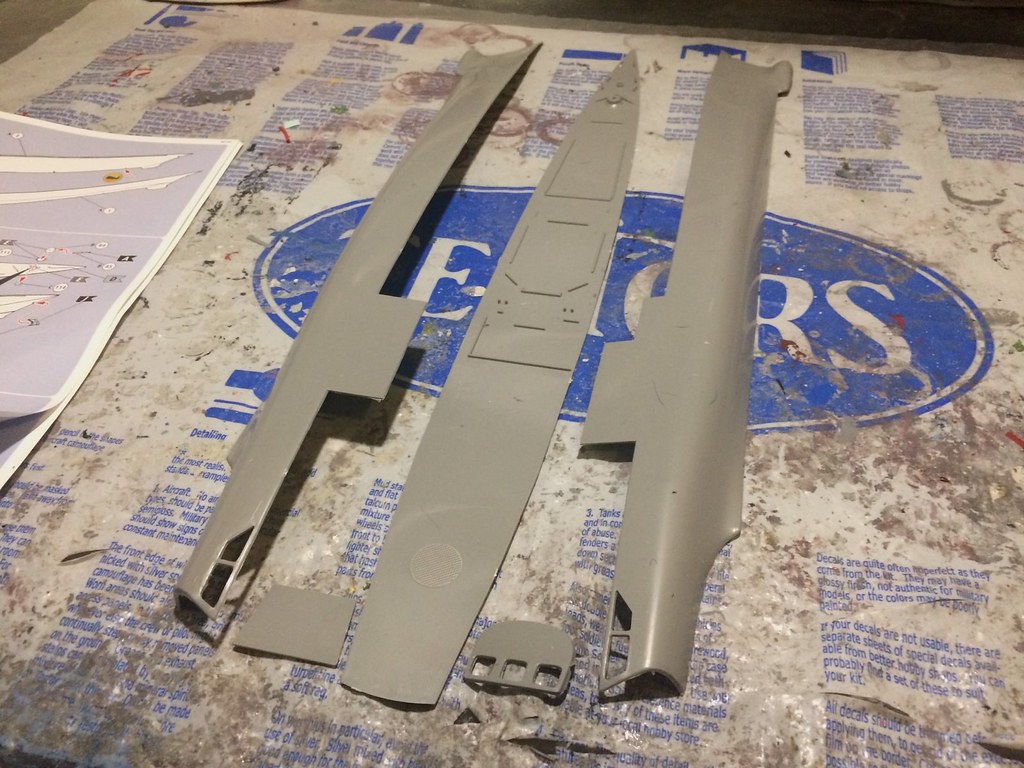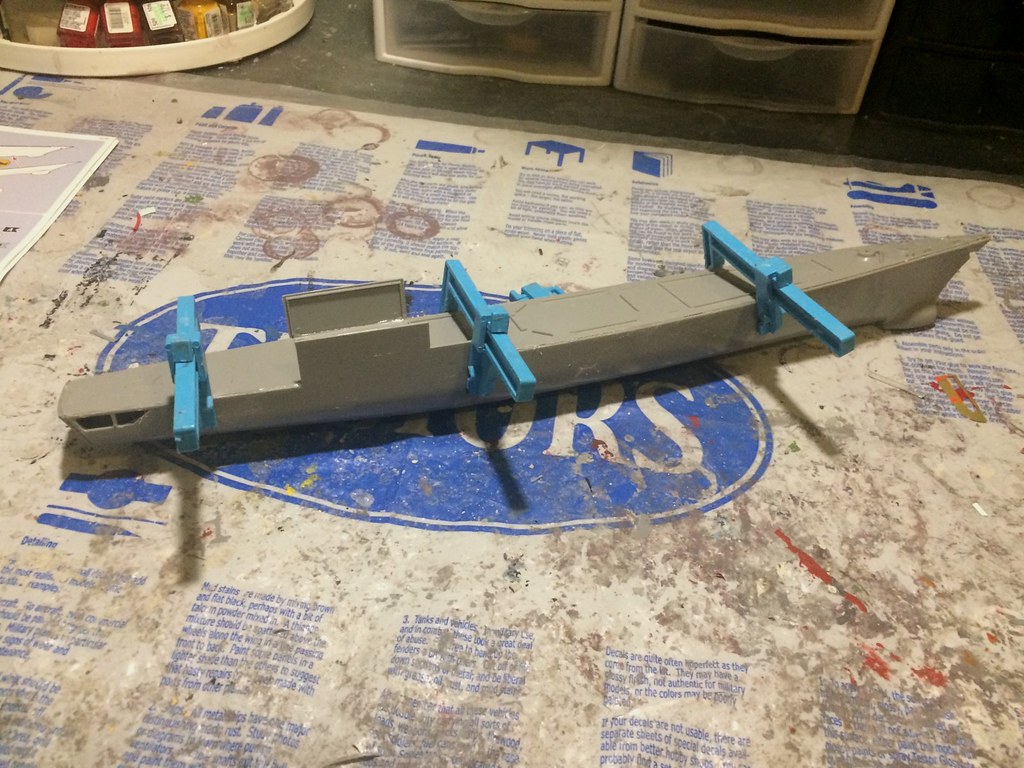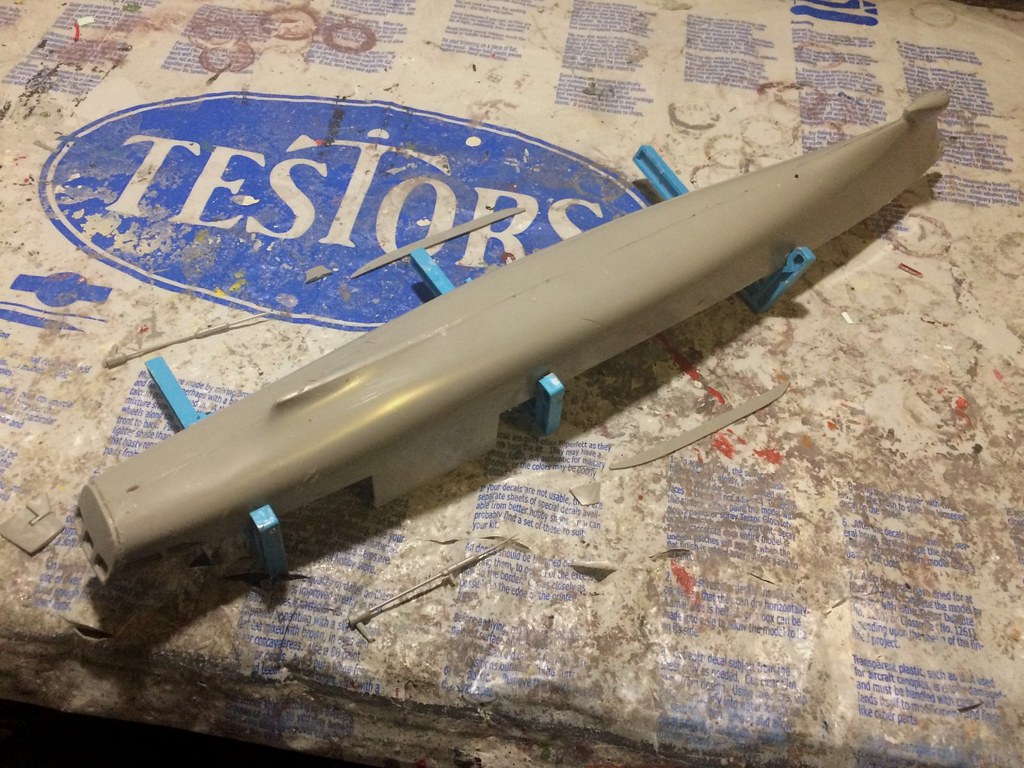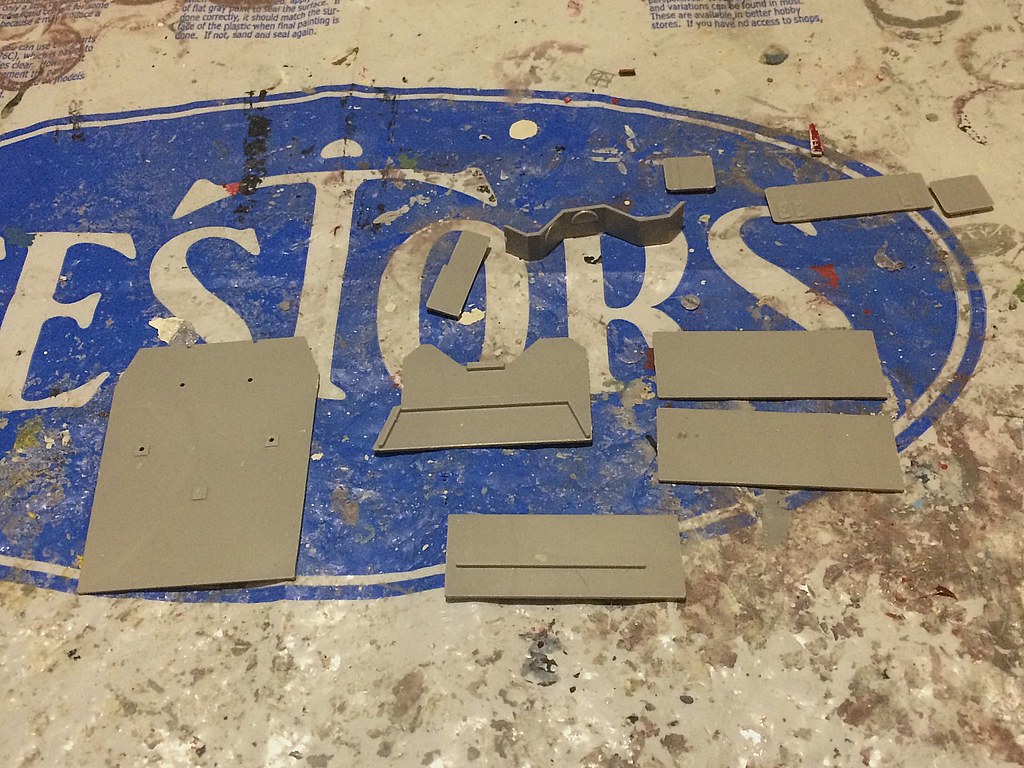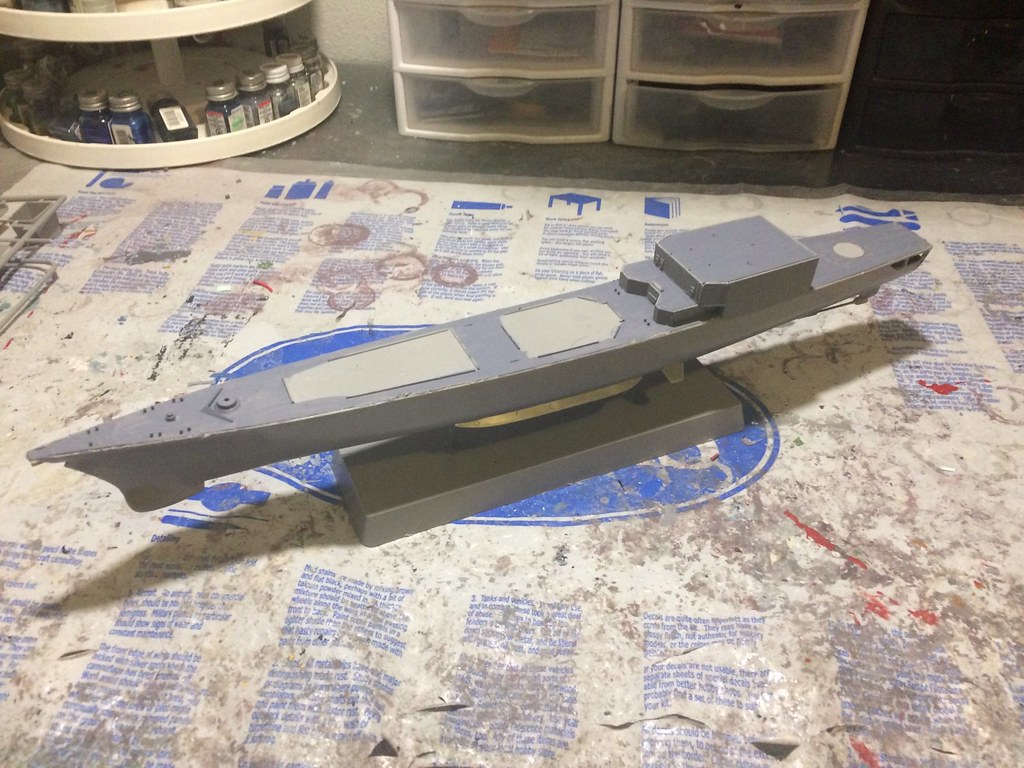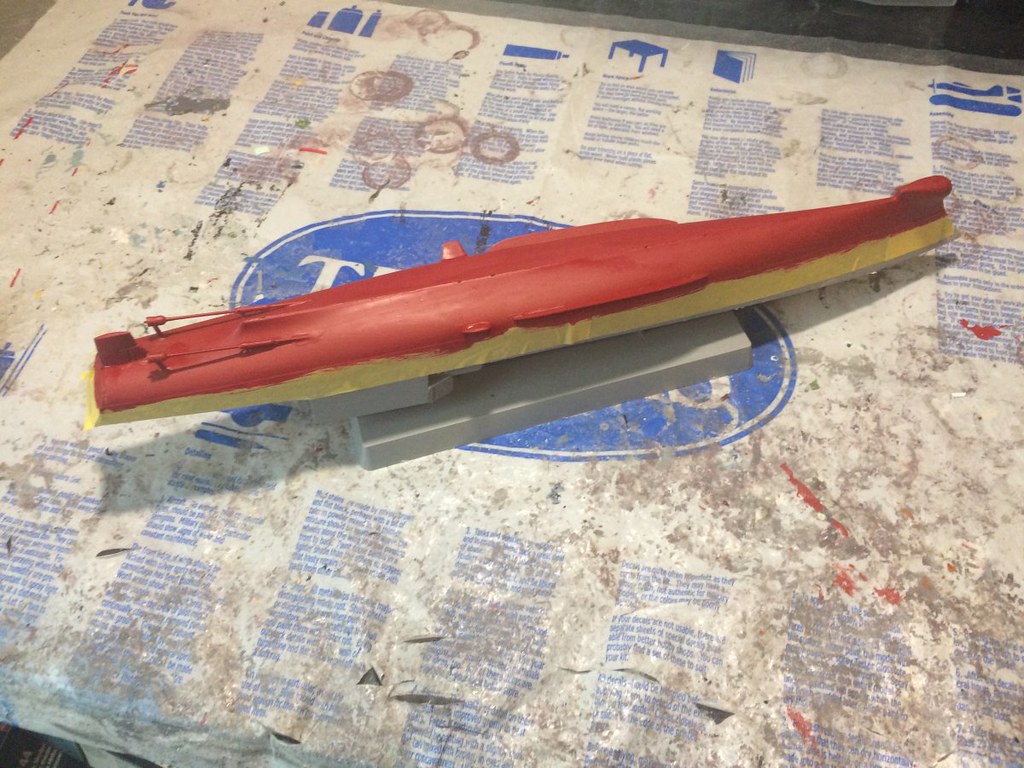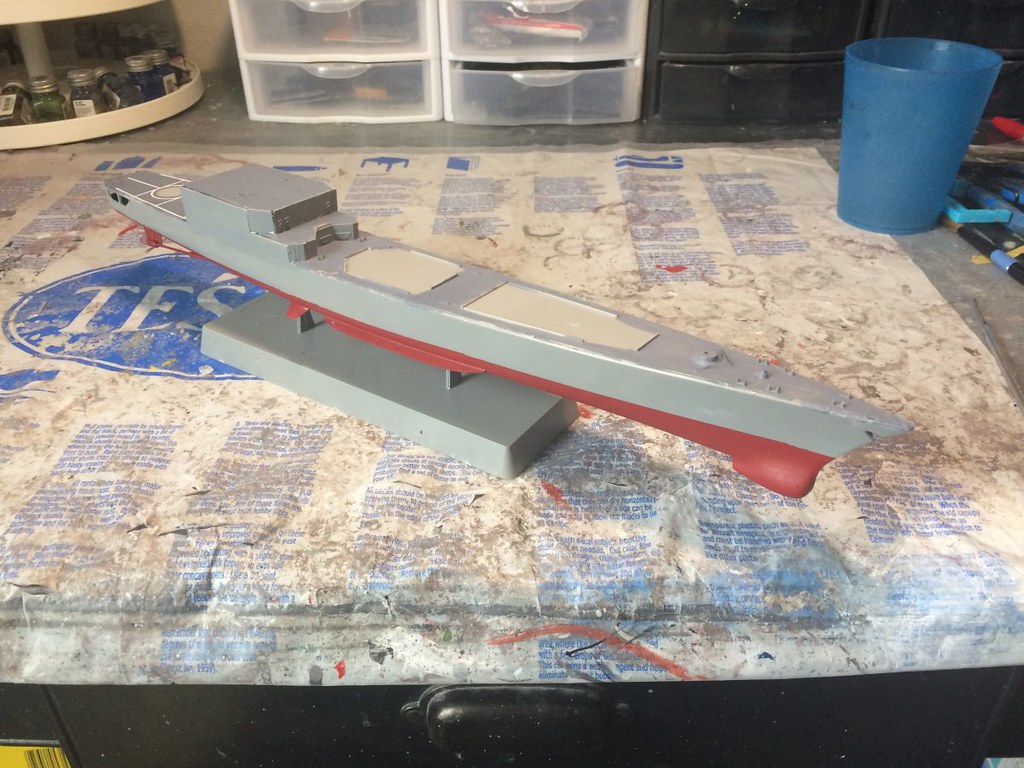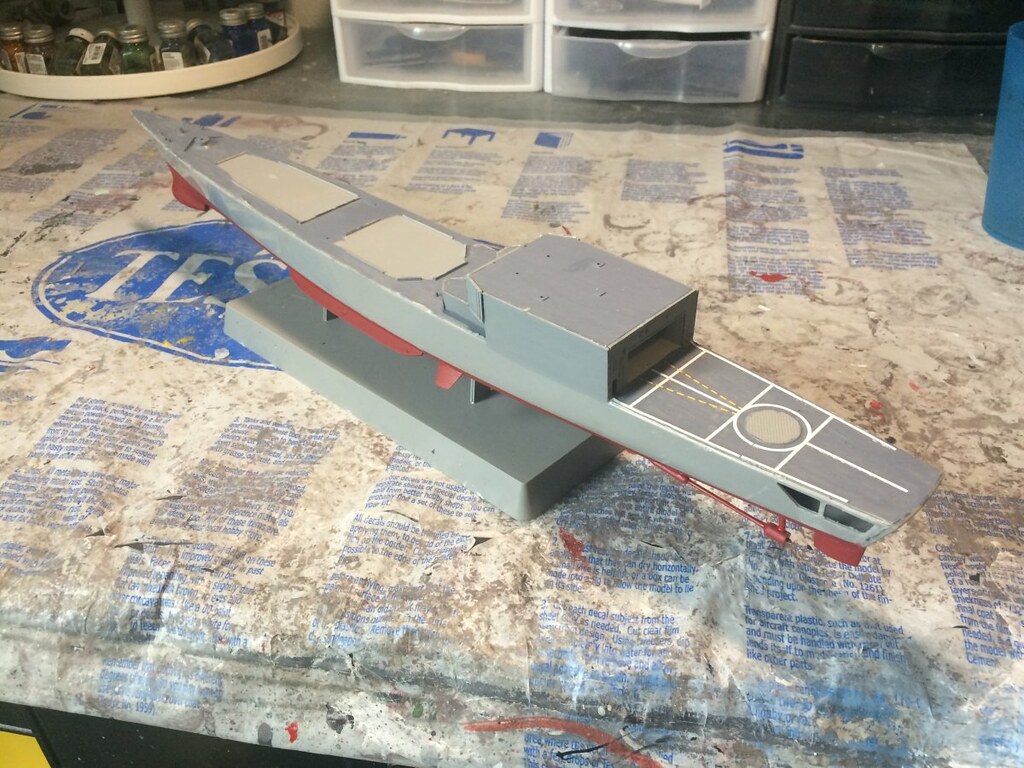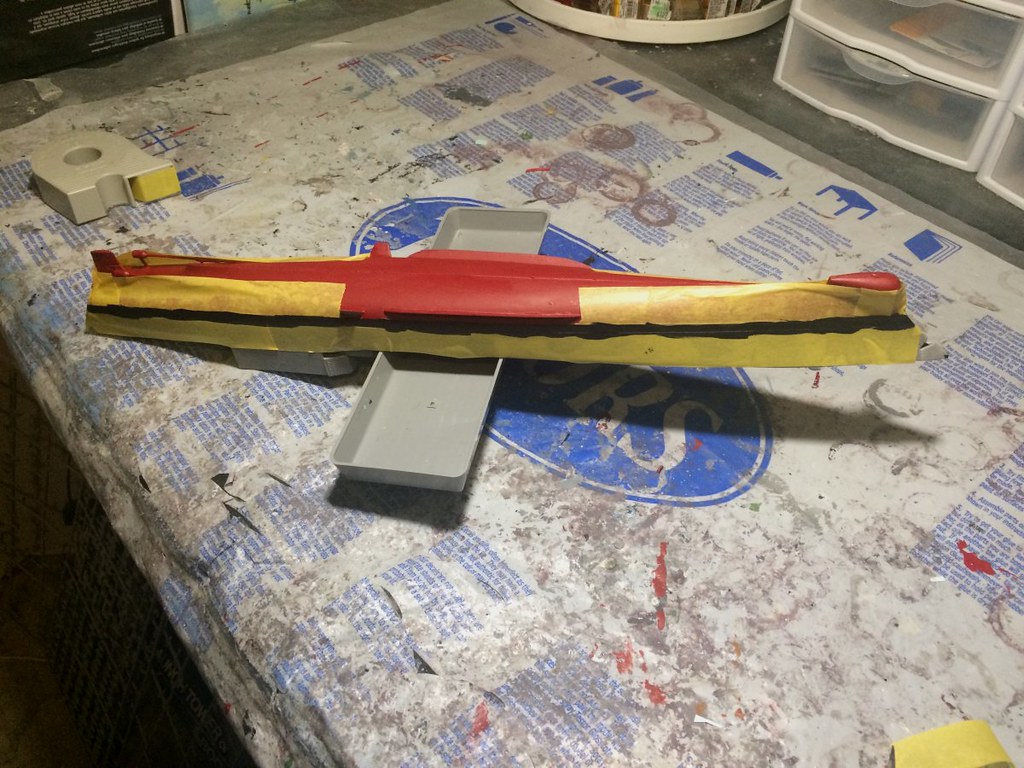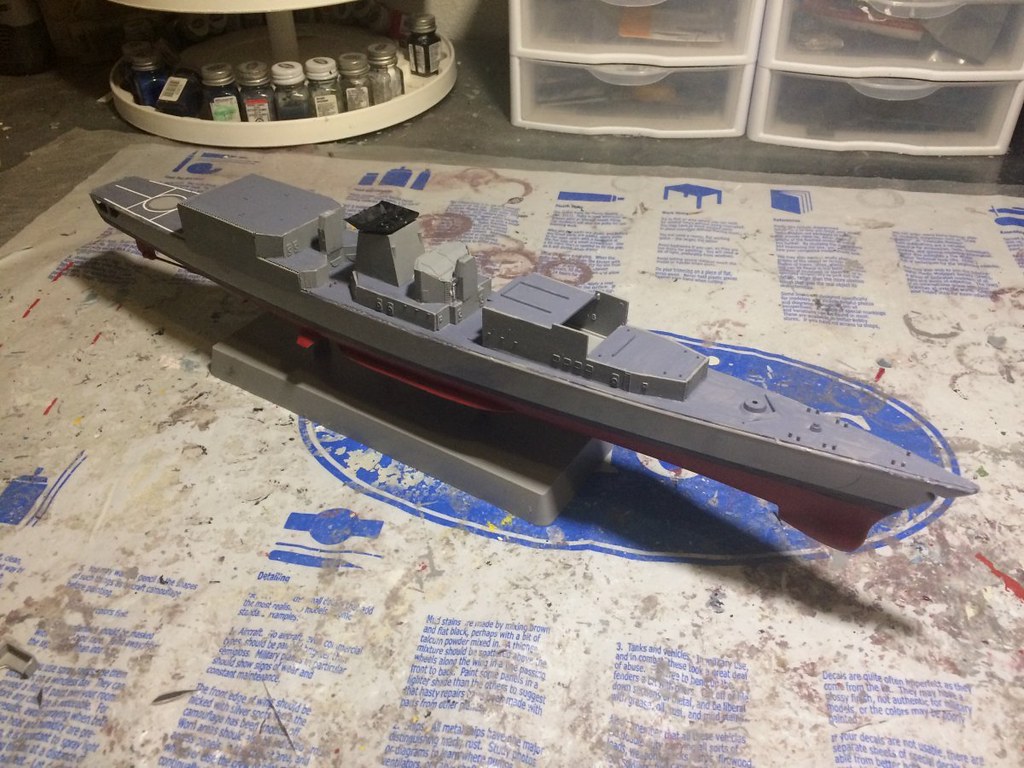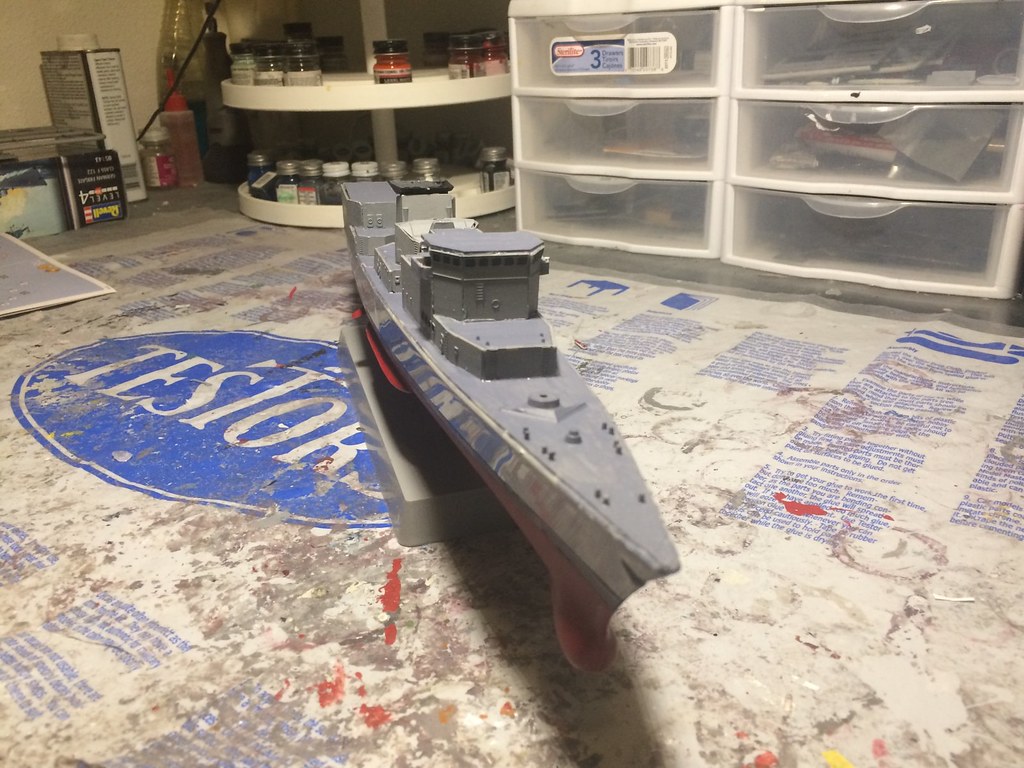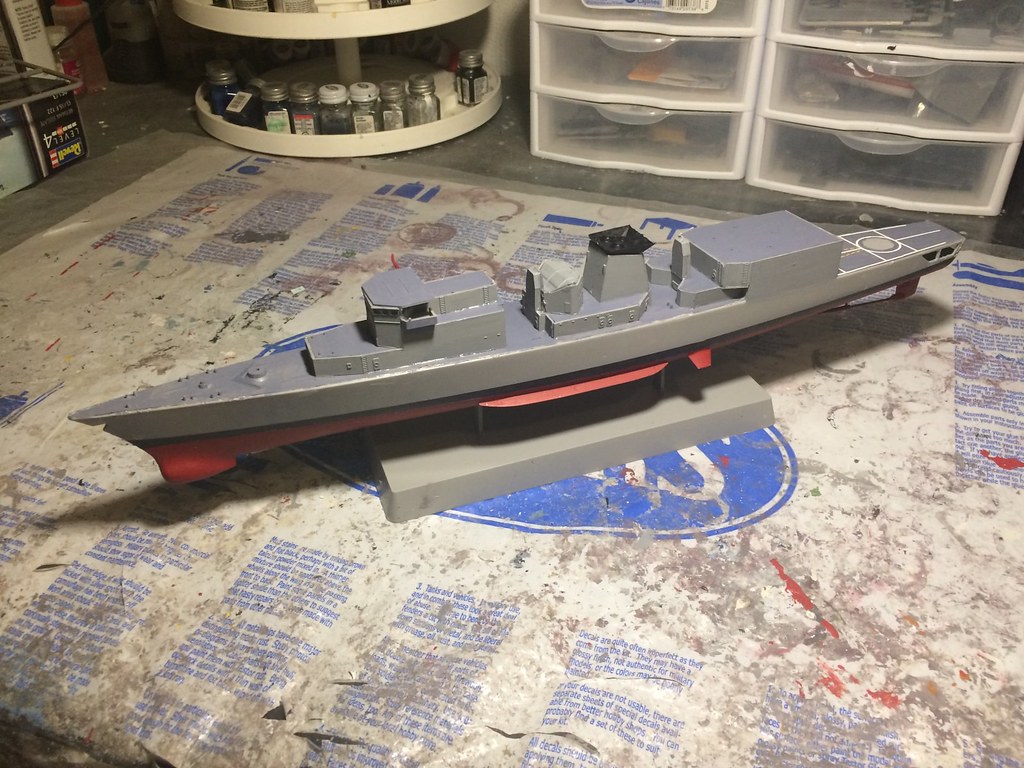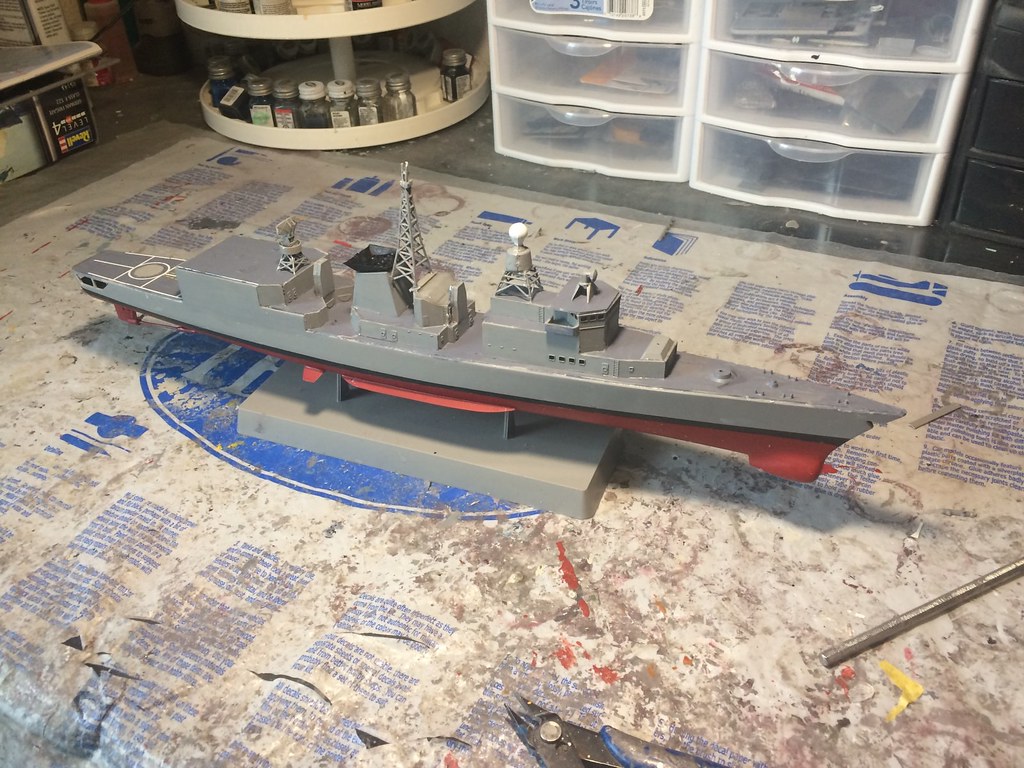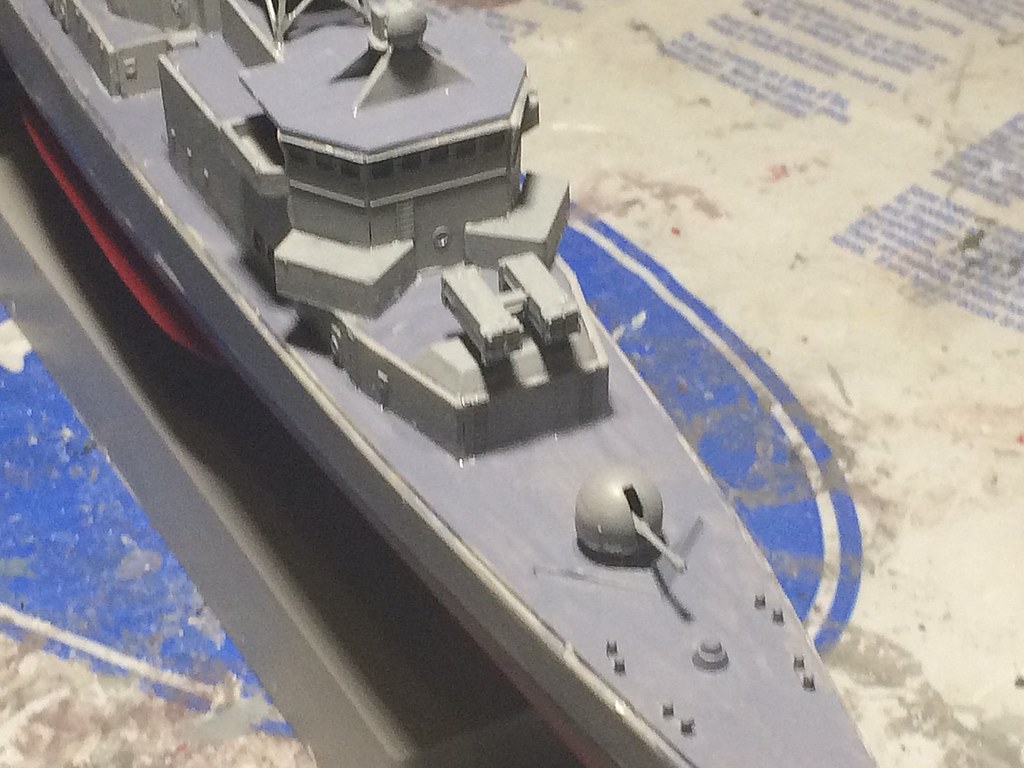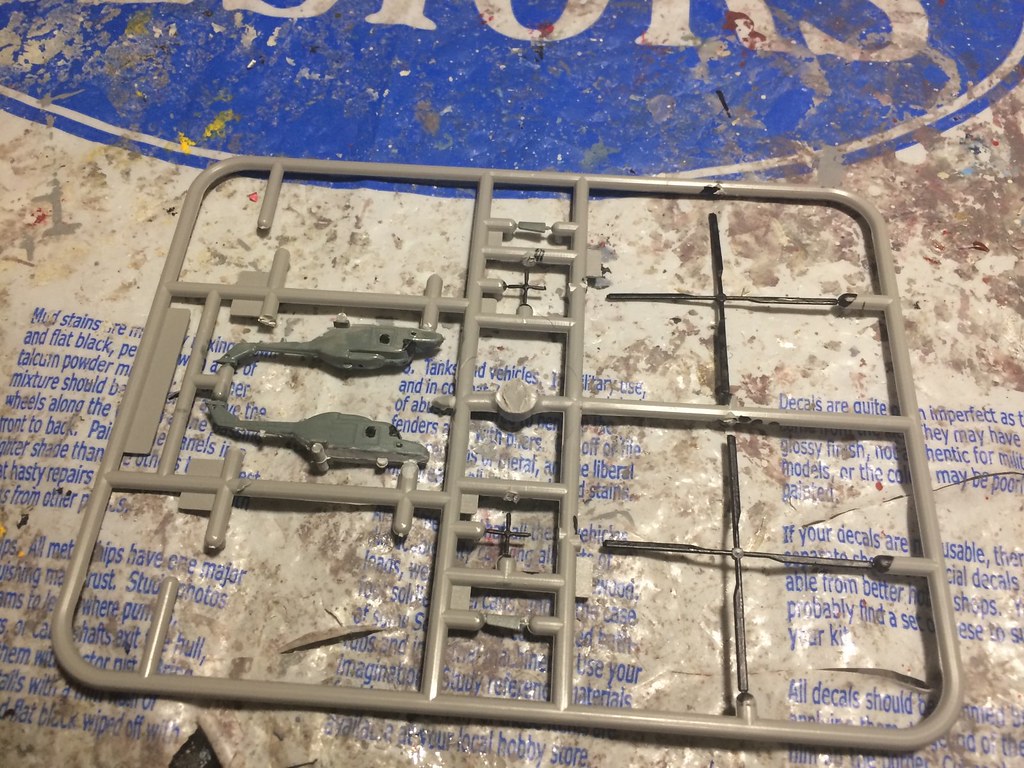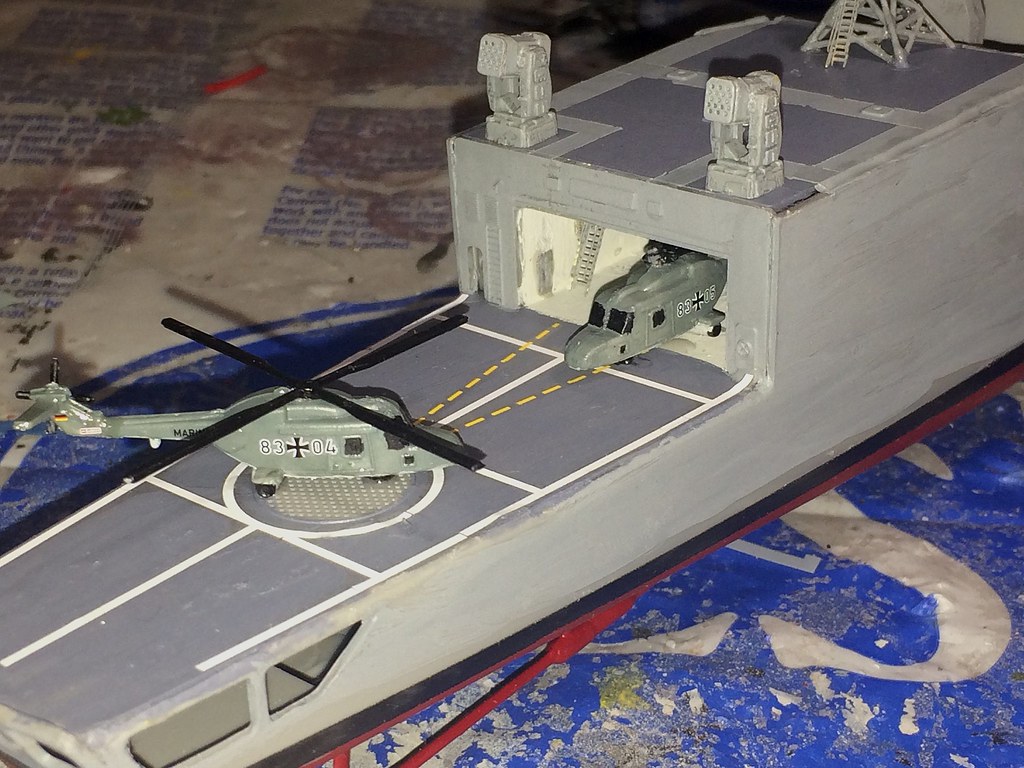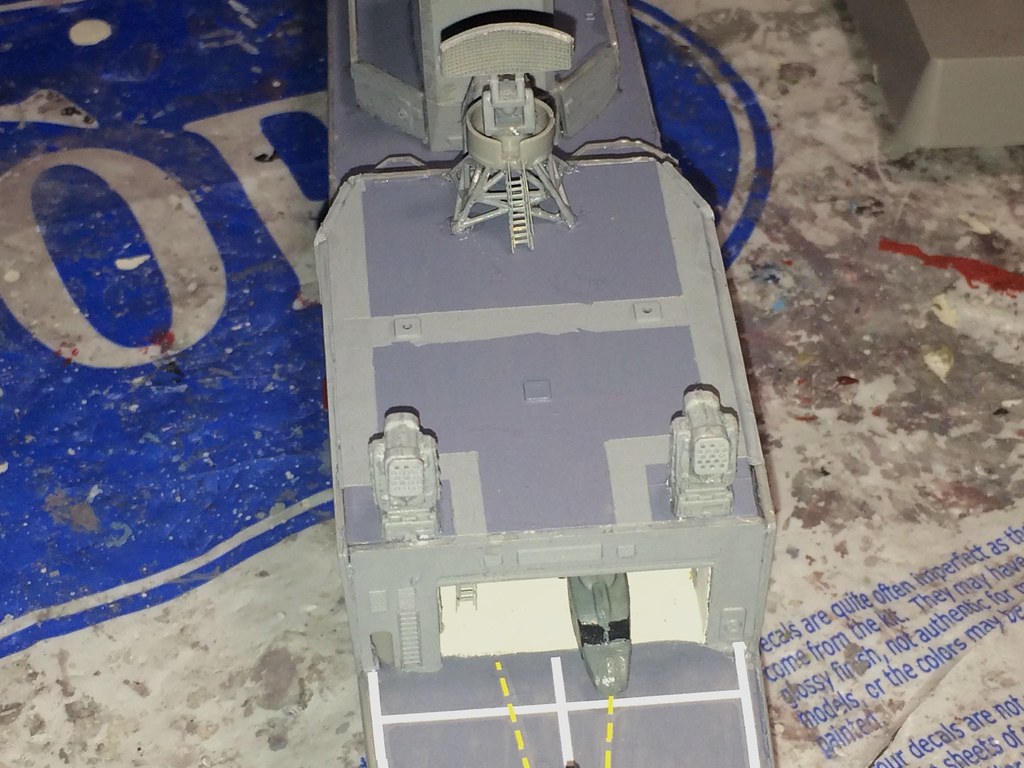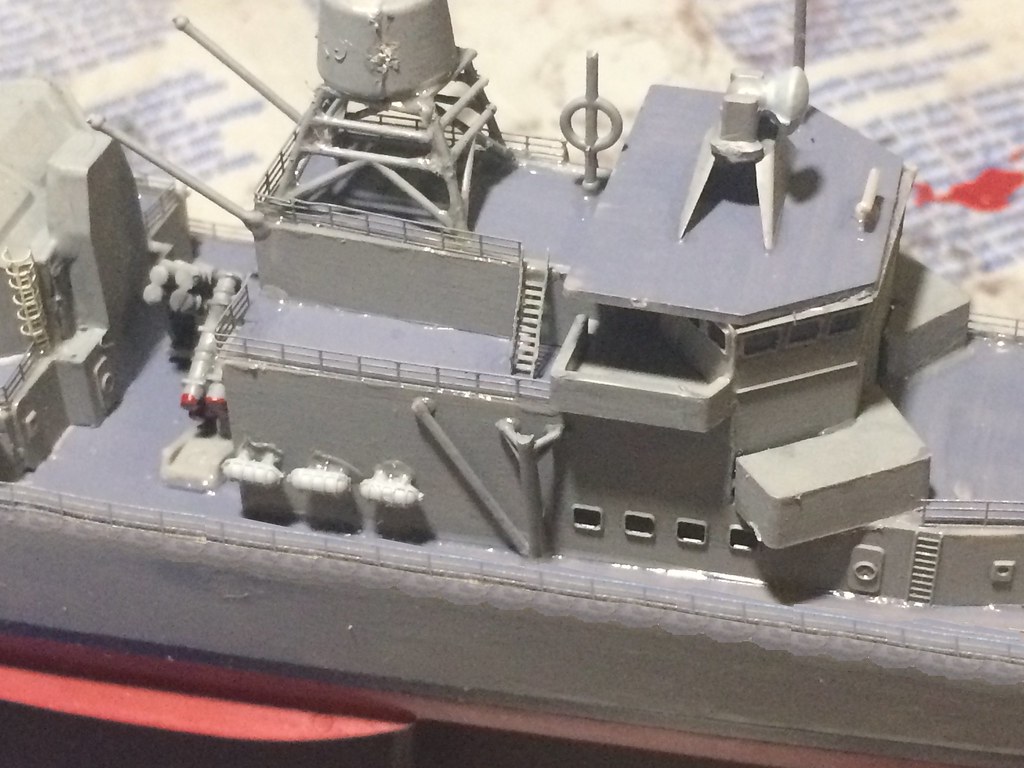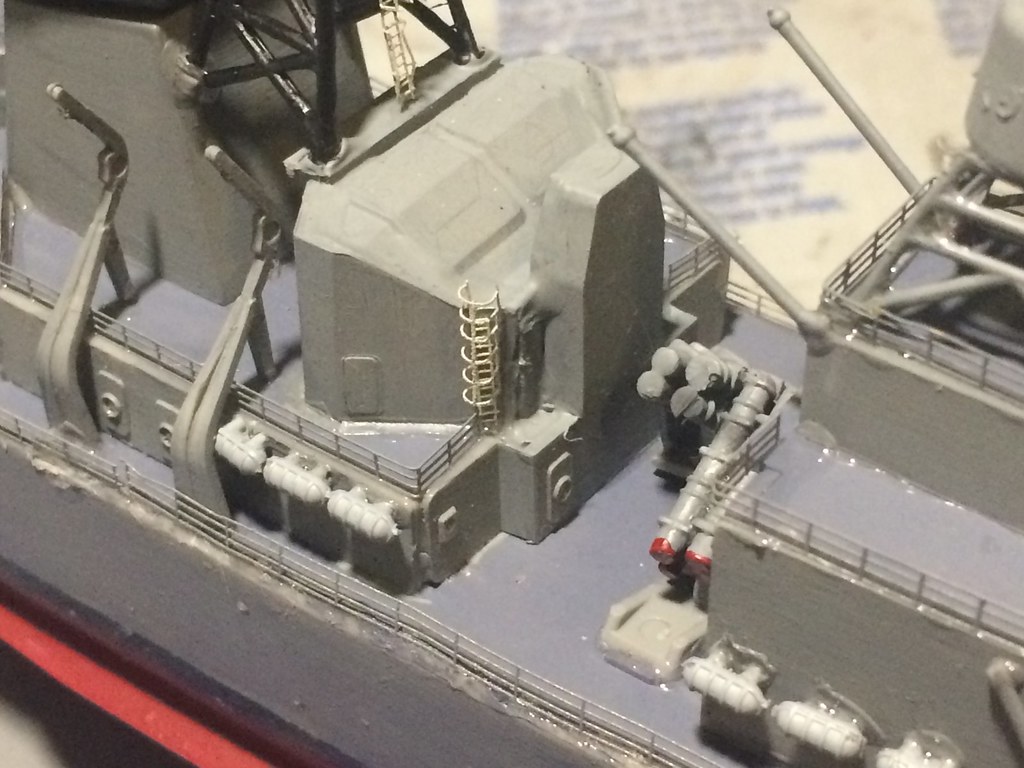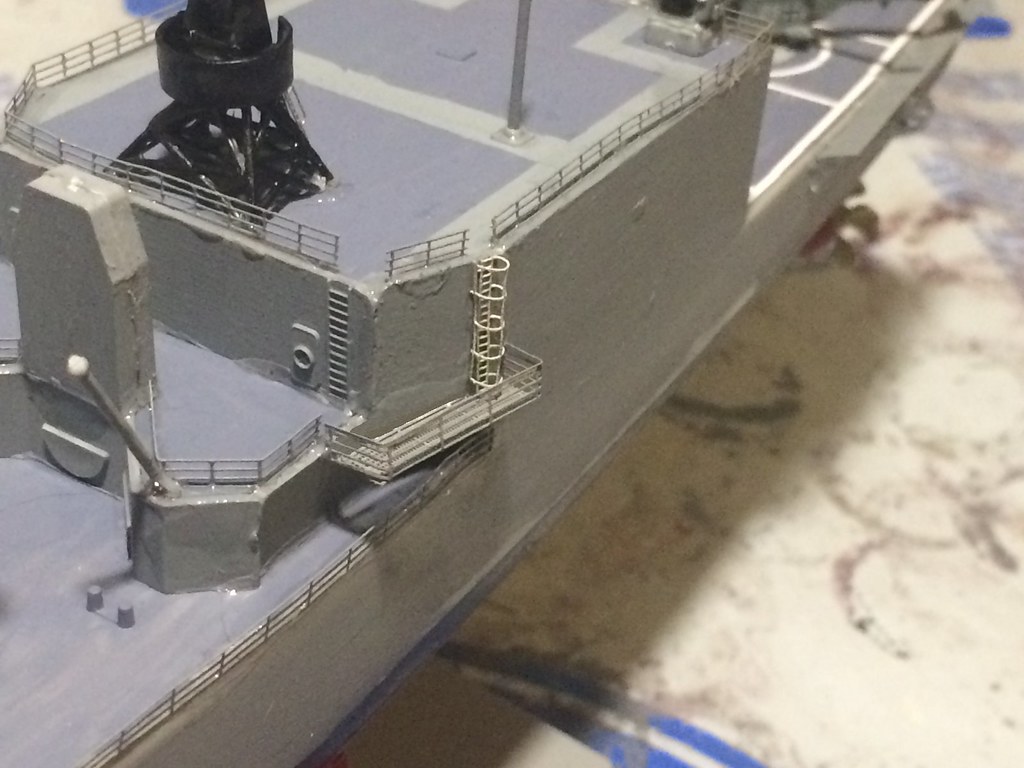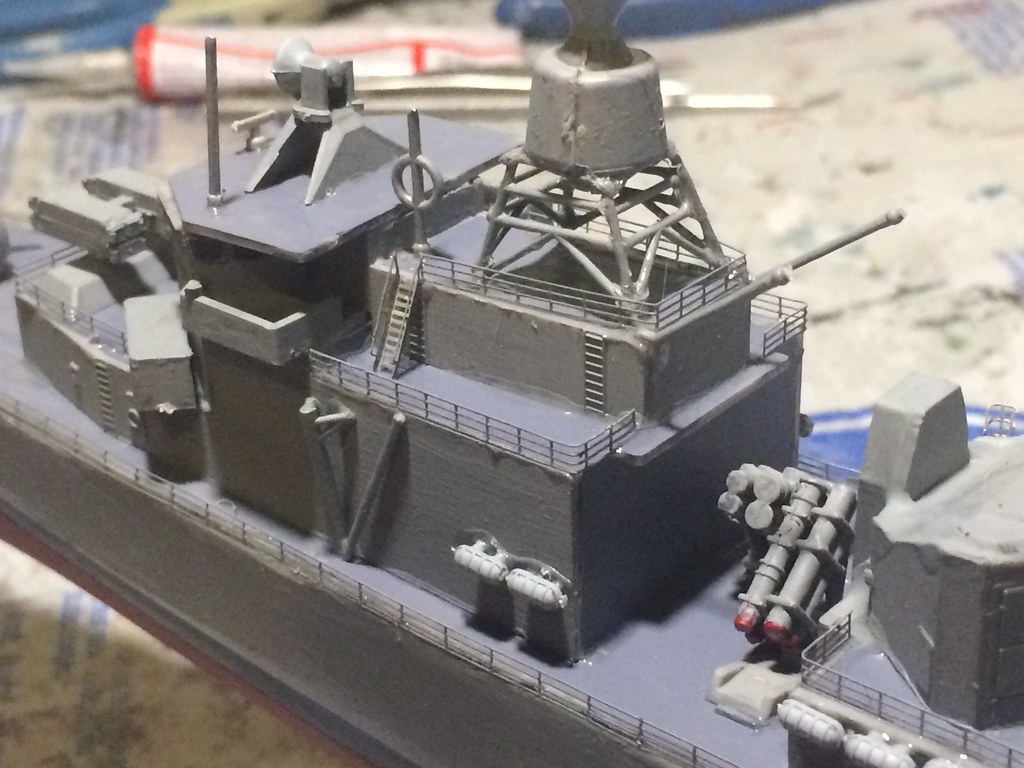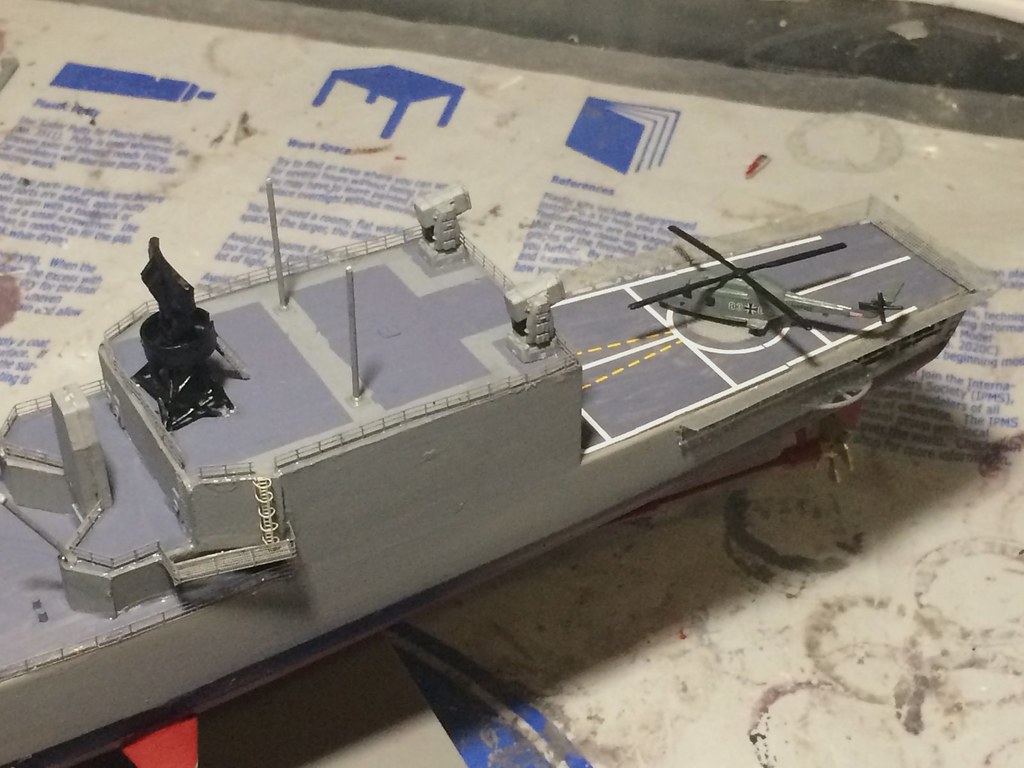My Review and Build of Revell KIT #5143, Bremen Class,
1/300 SCALE F122 Frigate, Karlsruhe, F212 REVIEW & BUILD,

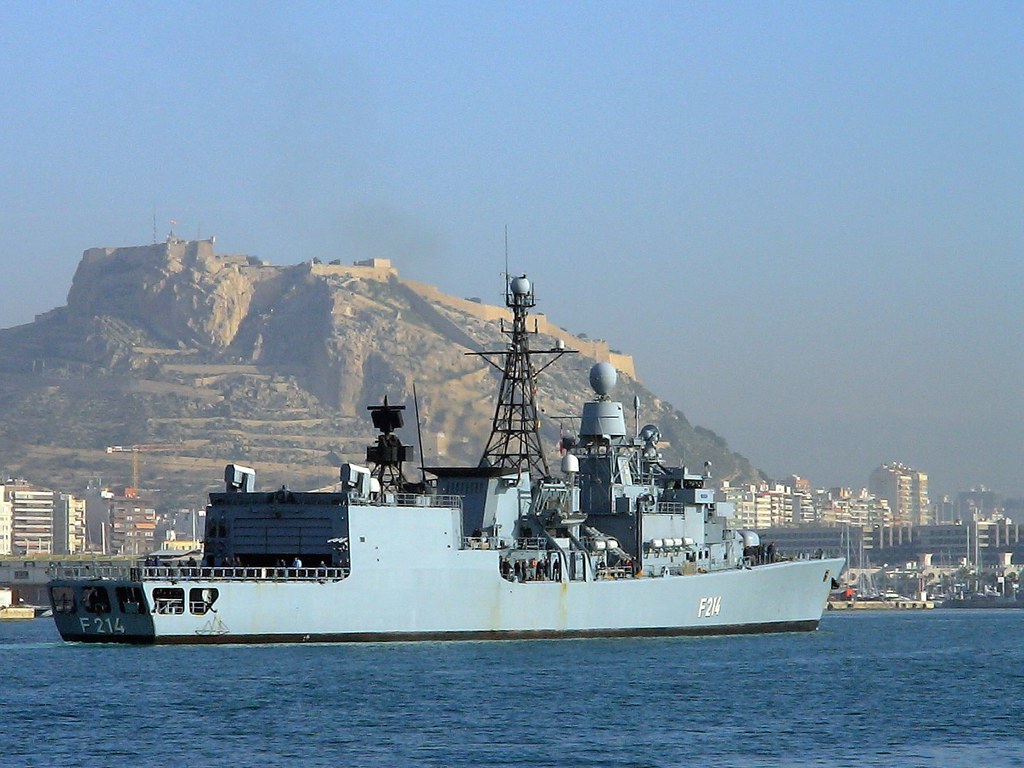
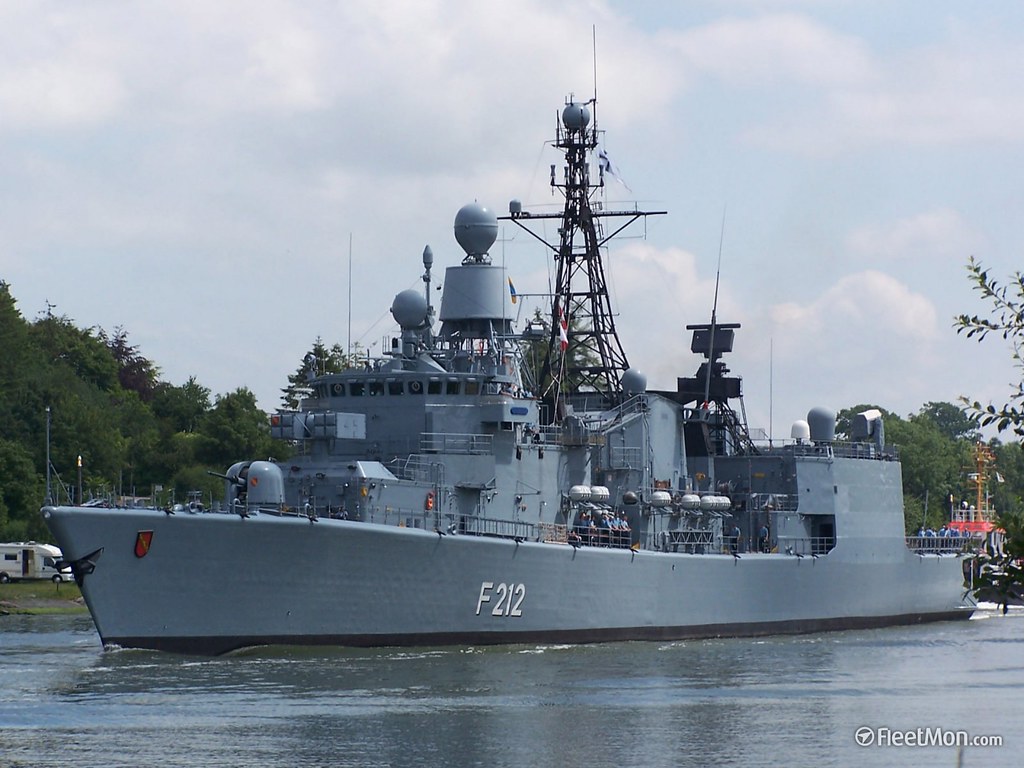
German Type F122 Bremen Class Friagtes
A total of eight F122 Bremen-class frigates of the German Navy were commissioned between 1982 and 1990. These have been the main stay of German frigates for the last 30 years, and they were built to a similar design as the Dutch Kortenaer class but with a different hull and propulsion system. The ships were built primarily for anti-submarine warfare but are also suited for multi-role tasks of anti-aircraft warfare and anti-surface warfare.
This class of ship was one of the last to be constructed under post-war displacement limitations imposed by the west on West Germany after World War II. Just the same, they are capable frigates, handle well, and have seved very capably for 30 and more years.
The eight Bremen class frigates will are in the process of being replaced by the new, much larger, more stealthy, F125 Baden-Württemberg class frigates, of which the first two have already been launched.
The charateristics of these frigates are as follows:
Displacement: 3,680 tonnes (3,620 long tons)
Length: 130.50 m (428 ft 2 in)
Beam: 14.60 m (47 ft 11 in)
Draft: 6.30 m (20 ft 8 in)
Propulsion: 2 × propeller shafts, controllable pitch, five-bladed Sulzer-Escher propellers, later replaced with seven-bladed
CODOG (Combined diesel or gas)
- 2 × MTU 20V956 TB92 diesel engines, 8.14 MW (10,920 hp) total
- 2 × General Electric LM2500 gas turbines, 38 MW (51,000 hp) total
- 2 × Renk STG 150-50 gearboxes, 10:1 (diesel) and 720:47 (turbine)
- 4 × Deutz MWM diesel-generators, 750 kW (1,010 hp)
Speed: 30 knots (56 km/h)
Range: more than 4,000 nmi (7,400 km) at 18 knots (33 km/h)
Complement: 202 crew plus 20 aviation
Sensors and processing systems:
1 × EADS TRS-3D air search radar (three-dimensional)
1 × WM 25 combined surface search and fire control radar I/J band
1 × Thales Nederland STIR 180 fire-control radar I/J/K band
1 × Kelvin Hughes Nucleus 5000 I band navigation radar
1 × STN Atlas DSQS-23BZ hull-mounted sonar
Electronic warfare & decoys:
ESM/ECM EADS FL 1800S
2 × SCLAR decoys
SLQ-25 Nixie torpedo decoy
Armament:
Naval guns:
1 × OTO-Melara 76 mm dual-purpose gun
2 × Mauser MLG27 27 mm autocannons
Antiaircraft warfare:
1 × 8-cell launch system, 16 × Sea Sparrow surface to air missiles
CIWS:
2 × MK 49 launcher, 21 × RAM each
Anti-ship missiles:
2 × quadruple Harpoon anti-ship missile launchers
Antisubmarine warfare:
2 × Mark 32 324-mm twin torpedo launchers, 8 × DM4A1 or Mark 46 torpedo
Aircraft carried:
2 Sea Lynx Mk.88A helicopters equipped with torpedoes, air-to-surface missiles Sea Skua, and/or heavy machine gun.
Some of the major design goals in building these vessels in the 1990s were, reduced radar, infrared and acoustic signatures (stealth technology), something that was new to the German Navy but has since been even more enhanced successively with the Type 123 Brandenburg-class frigate, the Type F124 Sachsen-class frigate, and now most notably with the new Type F125 Baden-Württemberg-class frigates.
Other important requirements in the 1980s, for frigates designed for the cold war, were to escort convoys for reinforcement and resupply of Allied forces in Europe. They frequently took part in NATO Standing Naval Forces. Since 1990, all ships have served in additional supporting missions such as the embargo operations against former Yugoslavia in the Adriatic Sea or Operation Enduring Freedom against the international terrorism.
During their lifetime, the ships' equipment has frequently been modernized and a further adaptation of combat systems is foreseen in the near future.
The Karlsruhe, F212
The Karlsruhe is the sixt of the class of eight Breen Class F122 frigates. She was laid down March 10, 1981, launched on January 8, 1982, and commission on April 19, 1984. She has been in active service for 33 years now.
For a period of time, Karlsruhe wa fitted with an addition Close-in-Weapon-System (CIWS) which was a 30mm Goal keeper 30mm gatlin gun for shooting down missile or other air threats. But the two RAM (Rolling air-frame missile) launchers were deamed more effective, and these two have been, with their 21 missiles each (412 missiles together) aboard all of the Bremen class since the mid-1980s.
During the Cold War period, up until 1990 or 1991, the ships' main war task was to escort convoys for reinforcement and resupply of Allied forces in Europe in case of war with the Soviet Union.
Once the Soviet Union fell and wnt bankrupt, the frigates have also taken on duties of crisis management with various caris cinluding Yugoslavia, Serbia, Lybia, the Mid-East with Iraq and Syria, and other such duties. These vessels, including the Karlsruhe, frequently take part in NATO Standing Naval Forces.
In fact, in 2016, the Karlsruhe was named the flagship of Standing NATO Maritime Group 2 (SNMG2) patrolling the Aegean Sea.
Since 1990, all ships have served in additional supporting missions such as the embargo operations against former Yugoslavia in the Adriatic Sea or Operation Enduring Freedom against the international terrorism.
The Karlsruhe has also successfully assisted in pirating operation in the Gulf of Aden. On December 25, 2008, she actively particpated asssiting an Egyptian freighter repel pirates on that date in the Gulf of Aden.
During her lifetime, as with all of the Bremen class, Karlsruhe, has frequently been modernized and with further adaptations of combat systems.
Karlsrruhe is one of only three Bremen class left in active service. It expected that she or one of her sisters will be decommissioned with the launch and trails of he next F125 frigate.
Introduction and What's in the Box - February 18, 2016
This Revell kit is from the GErman Operation group for revell. It is molded to scael 1/300. Although the most common scale is 1/350, revell models several ships in 1/35, and this is the only known injected molded plastic model of the F122, Bremen lass known.
The model is well done with numrous sprues of parts.
There is no "water-line" option and the hull comes in to pieces, port and starboard halves.
The kit includes all of the railing, but it is bulky plastic moled railing and larger than the actual raiing would be. I have a significant amount of 1/350 scale photo etch metal railing and will use it for this kit instead of what comes with the model.
Another short coming is the weapon systems. The Sea Sparrow Luancher, the RAM launchers, and the Harpoon missile launchers are all extremely simplistic with very little detail.
I have some Veteran model RAM launchers and ome very nice Harpoon quad launchers from other model kits, and also have Sea Sparrow missile covers for the octuple launcher to add realism to those parts...all of which I will use in this model.
There is also quite a bit of flash that needs to be removed from the model parts as you remove them from the sprues.
All of that said, themodel is a decent depiction of the class, and includes decals for any of the class. THis was a nice feature as I specificaly wanted to build the KArlsruhe.
Back in the mid-1970s I spent two years in Germany serving a mission for my church. During my time there I lived 10 months in Karlsruhe and really liked the there on the Rhine and the French border. So I wanted specifically to build the LArlsruhe since I feel a kinship to that city and a number of good people I met and befriended there.
The instructions are very nice in a 16 page full color booklet, with full color illustrations of the painting scheme.
I believe with the additional parts I am using and the photo etch parts, that this model will turn out ery well.
Here's how the model looks from the box, with the instructions:

